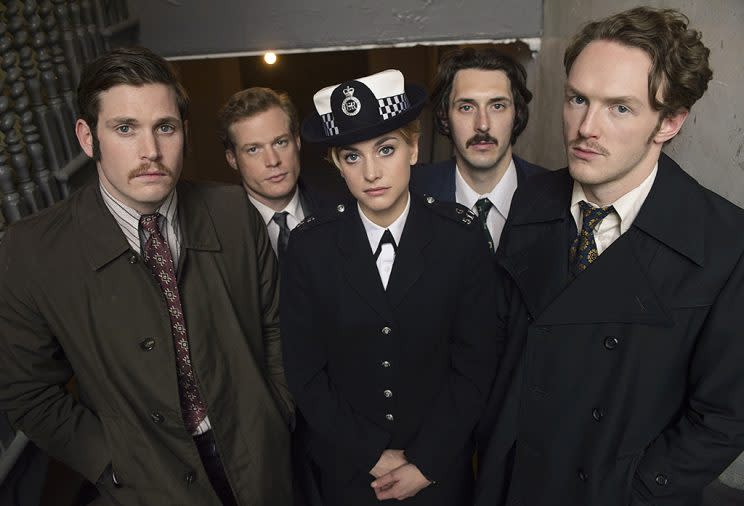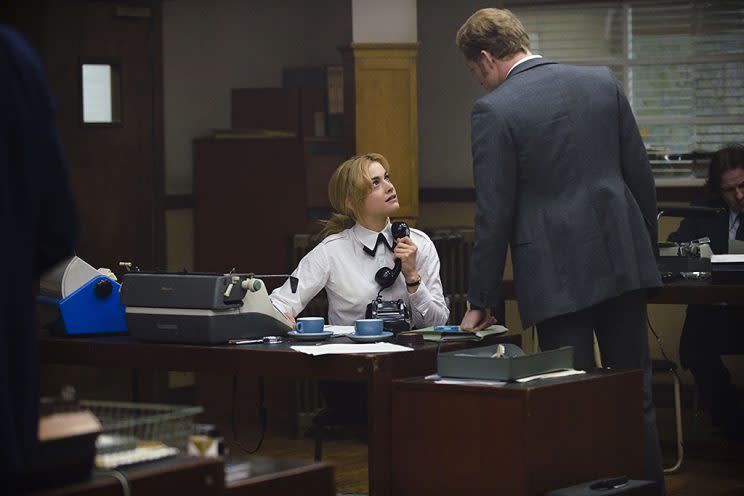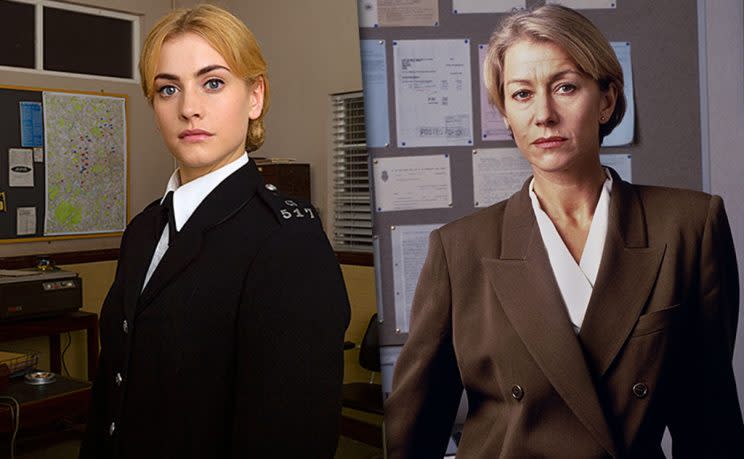‘Prime Suspect: Tennison’: 5 Things to Know About the PBS Prequel

Tennison. (Photo: Courtesy of ITV Studios and NoHo Film & Television for ITV and MASTERPIECE)
Last year marked the 25th anniversary of Prime Suspect, the groundbreaking British police drama that gave television one of its all-time great screen detectives: Helen Mirren’s steely Jane Tennison. The actress went on to reprise the role in six additional series that spanned 14 years, culminating in DCI Tennison’s retirement from a job that, at least initially, required her to confront horrific crimes in the field and horrific sexism in the office. With Jane off “enjoying” her retirement, the Prime Suspect‘s minders have decided to continue the series by turning back the clock.
Debuting on Masterpiece Mystery on PBS on June 25 (it previously premiered in England in March), Prime Suspect: Tennison — adapted from a prequel novel by Tennison’s creator, Lynda La Plante — introduces us to a 22-year-old Jane (played by Stefani Martini) at the beginning of her career circa 1973. “You really get to glimpse the origins of this great detective character,” Tennison executive producer Robert Wulff-Cochrane tells Yahoo TV. “Showing her genesis was always the excitement for us.” Here are five things you should know about the return of Jane Tennison, with helpful commentary from Wulff-Cochrane and Martini.
You’ll Experience ’70s-era London in All its Youthful Glory
Sandwiched in between London’s swinging ’60s and Thatcheristic ’80s were the fresh-faced ’70s, when young people sought to shake up the staid status quo. “You had the this great explosion of youth culture,” ways Wulff-Cochrane. “Swinging London is over, but what’s been left behind is this ambition for the young people at the time, and Jane utterly summons that up.” As he points out, England’s formerly separate male and female police forces were only merged in 1972, the year before the series begins, making Tennison something of a pioneer when she enlists in the newly gender-integrated department. “She’s young, inexperienced and new to the world of policing,” Martini explains, adding that Jane’s life is also complicated by the fact that she’s still living at home. “Earlier, people would live in their parents’ house until they got married, and that’s when you’d move out. Now people go to university and can get out of the house, but she’s still at home in this cramped, awkward way. It’s really fun to explore the music and clothing of that period. The clothing is incredibly unforgiving. And the facial hair! I found that really funny.”

‘Suspect’ Shows Sexism Is in Its Heyday
The original Prime Suspect series found Tennison frequently butting heads with the entrenched misogyny amongst her male colleagues on the police force. That fell away in future editions as she proved her mettle over and over again. Since Tennison is set just after male and female officers have been placed in the same workplace, sexism is, once again, a pronounced problem. “It was accepted in the workplace,” Martini says. “Jane has to fight to be heard and make a case for herself.” But Wulff-Cochrane does point out that she has some allies on the force. “Jane has a male boss [played by Sam Reid] who is incredibly encouraging and sees real talent in her. It was important for us to show that there are good and bad people in any institution.”
Helen Mirren Gave the Show Her Blessing
Although the Oscar-winning actress never dropped by the Tennison set, Mirren let it be known that she was happy to hear the character she created would have new life. “We needed to find an actress who not only shared certain physical characteristics, but also felt like she had the weight and technical ability to deliver a performance that would make people feel like this could be a young Helen Mirren,” Wulff-Cochrane says of the casting process. “To be honest, very early on Stefani stood out as an exceptional actress. She had this quality where you wanted to watch her.”

Martini, whose past credits include ITV’s Doctor Thorne and NBC’s Emerald City, says she has yet to speak with her predecessor personally, which might be a good thing. “I think I’d just melt,” she says laughing, when asked what she’d say first if she ever has a face-to-face with Mirren. “I don’t know that I’d be able to say anything. Just thank her really; her work is brilliant and she’s inspirational in so many ways.” Martini says that she made a point not to study the previous Prime Suspect series too closely. “I just focused on the work, and tried not to think too much about what it meant. It was only when the series started airing in England that I realized how big it was!”
Jane Tennison Wasn’t Always So Tough
Remember how different you were at age 22? The same goes for this version of Jane, who has yet to become the cynical, chain-smoking cop we met in 1991. “What we see here is a very bright, ambitious young woman who hasn’t had any knocks yet,” says Wulff-Cochrane. “We wanted to begin this story with some of her underlying characteristics: she’s really smart and really ambitious, but she’s not drinking and she’s not smoking. I hope people enjoy that sense of being able to spot the formative aspects of her character, as well as the way events shape her.” Still, Martini does promise that you’ll see some of that famed Tennison “hardness” by the end of the prequel series. “She’s exposed to a kind of violence and is changed by the end of it. I like to think you can see that strength in her.”
This May Not Be the End of the Beginning
With two decades separating the Martini and Mirren versions of Jane Tennison, there’s plenty of room for additional stories set along the Prime Suspect timeline, should the series continue. “If feels like we’ve got a lot of years in her life that could be covered,” Wulff-Cochrane points out. “I think there’s a fascination with her as a character, and there’s a lot you can do with her in terms of her emotional professional development. She’s got a long way to go.”
Prime Suspect: Tennison premieres Sunday, June 25 at 10 p.m. on Masterpiece Mystery on PBS.


